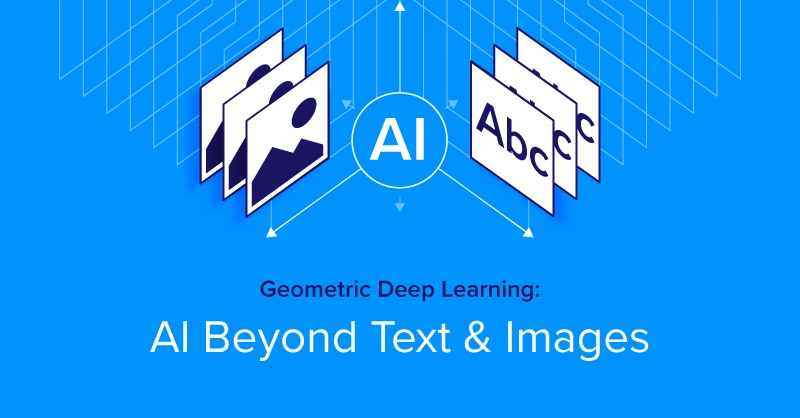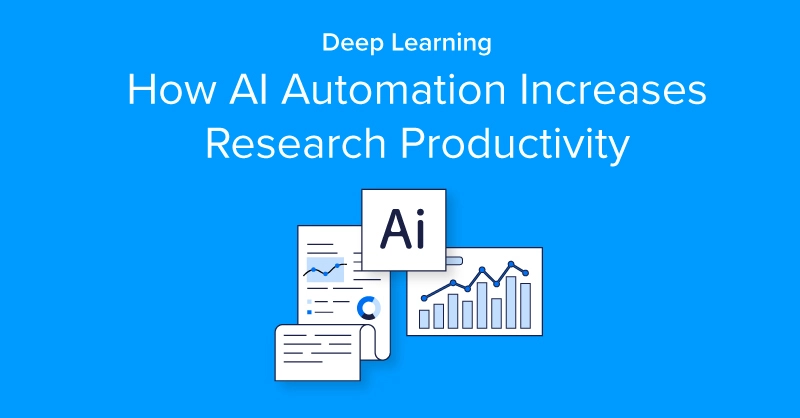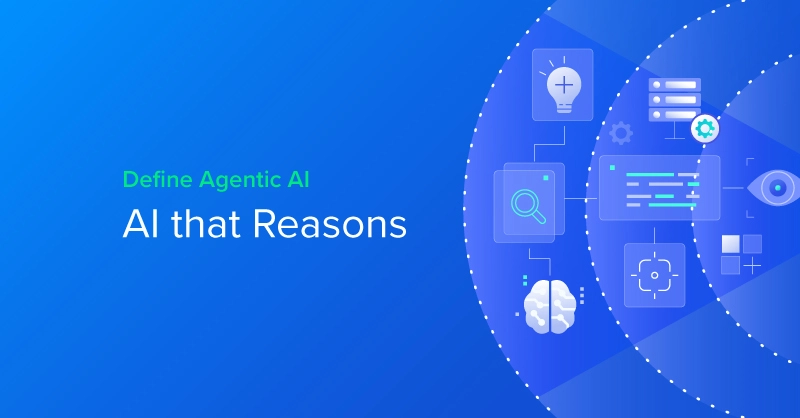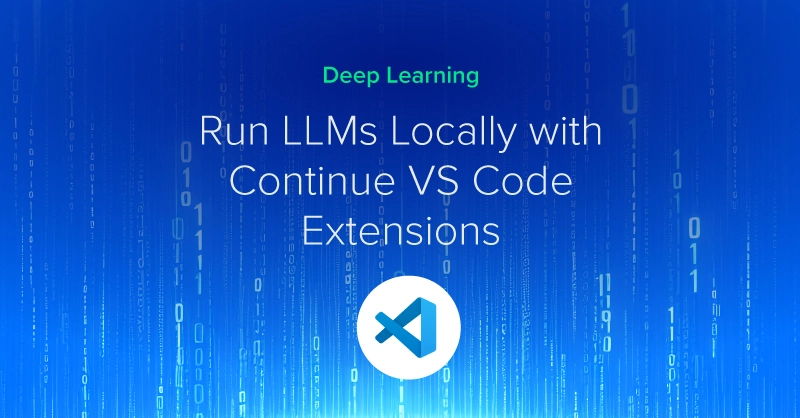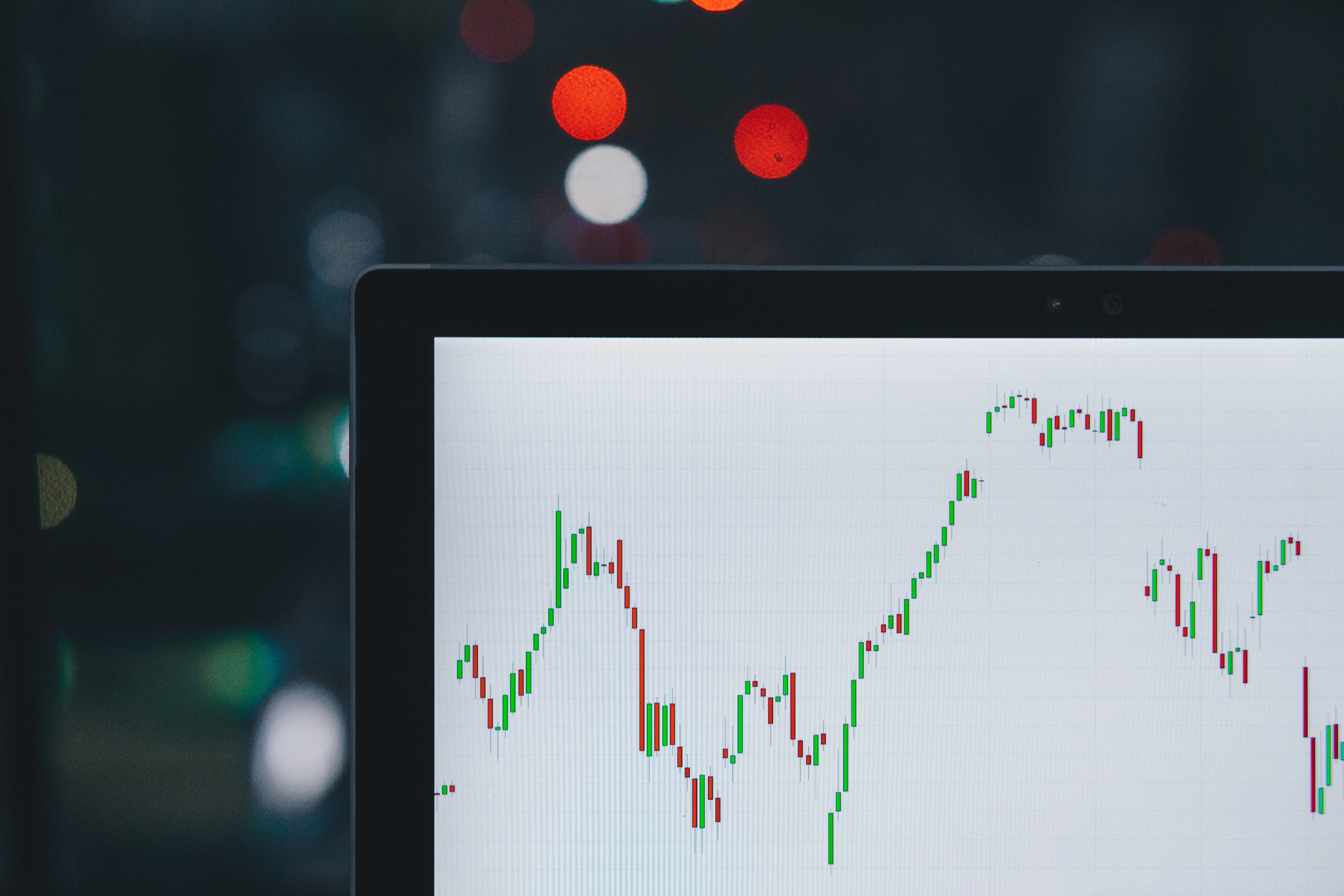
Accelerating Growth in the Financial Industry Using Deep Learning
Is Deep Learning now leading the charge for innovation in finance? Computational Finance, Machine Learning, and Deep Learning have been essential components of the finance sector for many years. The development of these techniques, technologies, and skills have enabled the financial industry to achieve explosive growth over the decades and become more efficient, sharp, and lucrative for its participants. Will this continue to be what drives the future of the financial industry?

How Do You Use Deep Learning in Finance?
Deep Learning for finance is the art of using neural network methods in various parts of the finance sector such as:
- customer service
- price forecasting
- portfolio management
- fraud detection
- algorithmic trading
- high performance computing
- risk management
- credit assessment
- and operations
With the newer deep learning focus, people driving the financial industry have had to adapt by branching out from an understanding of theoretical financial knowledge. They are now forced to learn how to use Python, Cloud Computing, Mathematics & Statistics, and also adopt the use of GPUs (Graphical Processing Units) in order to process data faster.
In this post we will highlight:
- Algorithmic Trading in Finance
- Price Forecasting in Finance
- Fraud Detection in Finance
Each section also includes a helpful link to a tutorial.
Algorithmic Trading in Finance
Algorithmic Trading is the process of creating a computational model to implement buy-sell decisions in the financial market. Other than being based on mathematical models, a trader can use deep learning techniques that use approximation models to implement buy and sell trades.
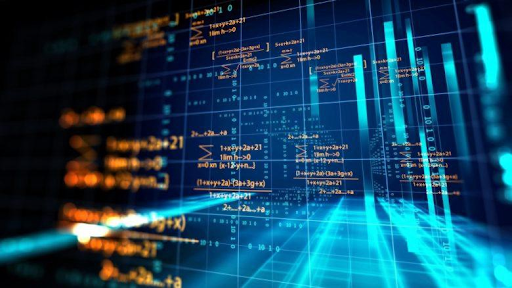
Algorithmic Trading Strategies
- Trend Following
- This is the most common type of strategy where investors will follow patterns in the price movements, moving averages, breakouts, etc. There are no predictions made on the price, instead the aim is to execute buy-sell strategies based on logical instruction provided by the investor.
- Arbitrage Opportunities
- Profiting off the price differential of a financial asset is known as “Financial Arbitrage”. This is basically when you buy a cheaper asset and sell it at a higher price in a different market, thereby taking a profit without any net cash flow. If the investor is able to successfully execute a strategy taking advantage of price differentials, there is opportunity for profitable trading.
- Mathematical Modeling
- Mean Reversion – This is based on the idea that high and low prices of an asset will revert back to its mean (average) value. Once its price is below the mean, it is seen as an opportunity to buy the asset in hopes of the price going above its average. The average value of an asset constantly changes, so it requires constant monitoring.
- Volume-Weighted Average Price (VWAP) – This strategy breaks up a large order and releases dynamically determined smaller chunks of the order to the market using stock specific historical volume profiles. The aim is to execute the order close to the VWAP, thereby benefiting on the average price.
- Time weighted Average Price (TWAP) – Time-weighted average price strategy breaks up a large order and releases dynamically determined smaller chunks of the order to the market using evenly divided time slots between a start and end time. The aim is to execute the order close to the average price between the start and end times, thereby minimizing market impact.
See this tutorial on Programming For Finance With Python Python, Zipline and Quantopian to learn how to use Quantitative Trading with Python.
Price Forecasting in Finance
Traders and experts in the financial industry have relied heavily on computers over the decades, but have been able to take it to the next level with high performance computing (HPC) running GPUs. These new workstations and servers offer large storage options for massive datasets. These systems also allow people to execute complex, memory heavy algorithms that require millions or even billions of data points on their local machine to execute financial trading strategies, as well as price forecasting using deep learning techniques.
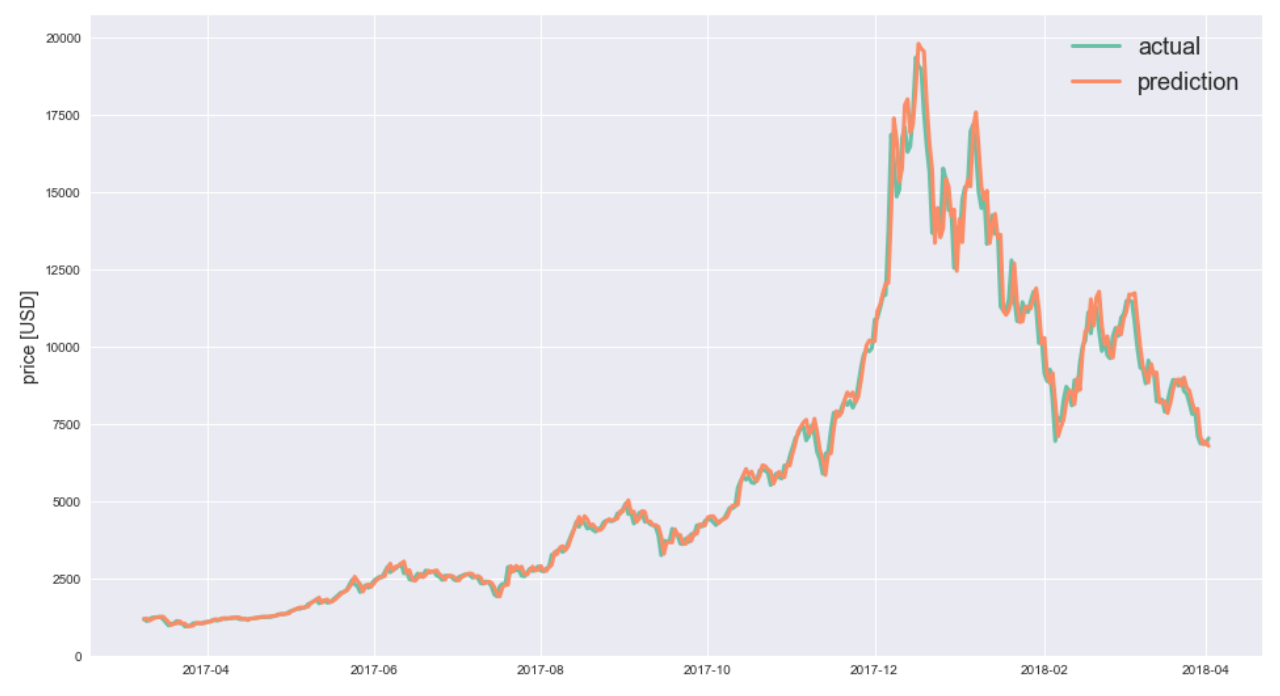
Techniques Used for Deep Learning Price Forecasting
- Recurrent Neural Network (RNN) – Short time horizon
- RNN is used for data with a sequential order, such as a time series database.
- Long Short Term Memory Models (LSTM) – Longer time horizon compared to RNN
- LSTM is a variation of RNN with added parameters in order to support longer memory so that the forecasted time horizon can be longer.
- Multilayer Perceptron (MLP)
- MLP is a class of feed-forward neural networks that consists of an Input layer, Hidden layer and Output layer. This is also suitable for time series forecasting because it is:
- Robust to outliers, noisy data and missing values
- Non-linear modeling
- Support for Multivariate forecasting
- Multi-step forecasting
- MLP is a class of feed-forward neural networks that consists of an Input layer, Hidden layer and Output layer. This is also suitable for time series forecasting because it is:
This tutorial can take you through Financial Asset Price Prediction using Python and TensorFlow 2 and Keras
Fraud Detection in Finance
The world of finance is riddled with fraud and deception. Hackers and scammers are forever trying to steal confidential personal information and internal company information to sell. Firms are under major scrutiny by governments worldwide to upgrade their cybersecurity and fraud detection systems. Cybersecurity is also one of the most sought after positions in the job market in 2020.
Machine learning and deep learning is now used to automate the process of searching data streams for anomalies that could be a security threat.
Autoencoders
A Deep Learning algorithm for anomaly detection is an Autoencoder. An Autoencoder neural network is an unsupervised learning algorithm that applies backpropagation, setting the target values to be equal to the inputs which essentially encodes and compresses the data and reconstructs the data to as close of a representation to the original data as possible.
An Autoencoder consists of 2 parts:
- Encoder – Takes input data and compresses it into a vector of quantities.
- Decoder – Takes the data from the encoder and reconstructs the original input.
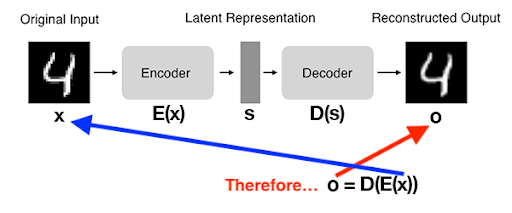
This tutorial will take you through Autoencoders with Keras, TensorFlow and Deep Learning
Scratching the Surface of Deep Learning’s Potential in Finance
The finance industry is one of the most influential industries impacted by new findings in AI (artificial intelligence). Forecasting opportunities to increase returns and protecting data using AI are two areas seeing growth due to the higher volatility in markets in recent years and the increased threat of cybercrime.
The industry generates trillions of data points that need innovative solutions to process and analyze this data. Tighter regulation and increasing pressure from governments, industry and consumers force players in the finance industry to protect data while still increasing returns to investors.
Who Will Run Your Deep Learning Projects?
The financial industry used to be dominated by MBA’s from the most prestigious schools in the world. Now the shift in focus is toward tech talent with knowledge of programming languages like Python, along with cloud computing and deep learning.
Engineers also play an important role in setting up and managing GPU-powered hardware to meet new challenges. Understanding what data you are working with, the deep learning applications and frameworks you need to use, and the results you want to get, requires everyone to work together. If you’re missing engineers in your mix, finding a company like Exxact can help with understanding your requirements and delivering a solution that is pre-configured, set up and ready to go as soon as you plug it in. You just need to make sure you have the technical staff on hand to then use it, or gain the requisite knowledge to run it yourself.

Deep Learning in Finance: Is This The Future of the Financial Industry?
Accelerating Growth in the Financial Industry Using Deep Learning
Is Deep Learning now leading the charge for innovation in finance? Computational Finance, Machine Learning, and Deep Learning have been essential components of the finance sector for many years. The development of these techniques, technologies, and skills have enabled the financial industry to achieve explosive growth over the decades and become more efficient, sharp, and lucrative for its participants. Will this continue to be what drives the future of the financial industry?

How Do You Use Deep Learning in Finance?
Deep Learning for finance is the art of using neural network methods in various parts of the finance sector such as:
- customer service
- price forecasting
- portfolio management
- fraud detection
- algorithmic trading
- high performance computing
- risk management
- credit assessment
- and operations
With the newer deep learning focus, people driving the financial industry have had to adapt by branching out from an understanding of theoretical financial knowledge. They are now forced to learn how to use Python, Cloud Computing, Mathematics & Statistics, and also adopt the use of GPUs (Graphical Processing Units) in order to process data faster.
In this post we will highlight:
- Algorithmic Trading in Finance
- Price Forecasting in Finance
- Fraud Detection in Finance
Each section also includes a helpful link to a tutorial.
Algorithmic Trading in Finance
Algorithmic Trading is the process of creating a computational model to implement buy-sell decisions in the financial market. Other than being based on mathematical models, a trader can use deep learning techniques that use approximation models to implement buy and sell trades.

Algorithmic Trading Strategies
- Trend Following
- This is the most common type of strategy where investors will follow patterns in the price movements, moving averages, breakouts, etc. There are no predictions made on the price, instead the aim is to execute buy-sell strategies based on logical instruction provided by the investor.
- Arbitrage Opportunities
- Profiting off the price differential of a financial asset is known as “Financial Arbitrage”. This is basically when you buy a cheaper asset and sell it at a higher price in a different market, thereby taking a profit without any net cash flow. If the investor is able to successfully execute a strategy taking advantage of price differentials, there is opportunity for profitable trading.
- Mathematical Modeling
- Mean Reversion – This is based on the idea that high and low prices of an asset will revert back to its mean (average) value. Once its price is below the mean, it is seen as an opportunity to buy the asset in hopes of the price going above its average. The average value of an asset constantly changes, so it requires constant monitoring.
- Volume-Weighted Average Price (VWAP) – This strategy breaks up a large order and releases dynamically determined smaller chunks of the order to the market using stock specific historical volume profiles. The aim is to execute the order close to the VWAP, thereby benefiting on the average price.
- Time weighted Average Price (TWAP) – Time-weighted average price strategy breaks up a large order and releases dynamically determined smaller chunks of the order to the market using evenly divided time slots between a start and end time. The aim is to execute the order close to the average price between the start and end times, thereby minimizing market impact.
See this tutorial on Programming For Finance With Python Python, Zipline and Quantopian to learn how to use Quantitative Trading with Python.
Price Forecasting in Finance
Traders and experts in the financial industry have relied heavily on computers over the decades, but have been able to take it to the next level with high performance computing (HPC) running GPUs. These new workstations and servers offer large storage options for massive datasets. These systems also allow people to execute complex, memory heavy algorithms that require millions or even billions of data points on their local machine to execute financial trading strategies, as well as price forecasting using deep learning techniques.

Techniques Used for Deep Learning Price Forecasting
- Recurrent Neural Network (RNN) – Short time horizon
- RNN is used for data with a sequential order, such as a time series database.
- Long Short Term Memory Models (LSTM) – Longer time horizon compared to RNN
- LSTM is a variation of RNN with added parameters in order to support longer memory so that the forecasted time horizon can be longer.
- Multilayer Perceptron (MLP)
- MLP is a class of feed-forward neural networks that consists of an Input layer, Hidden layer and Output layer. This is also suitable for time series forecasting because it is:
- Robust to outliers, noisy data and missing values
- Non-linear modeling
- Support for Multivariate forecasting
- Multi-step forecasting
- MLP is a class of feed-forward neural networks that consists of an Input layer, Hidden layer and Output layer. This is also suitable for time series forecasting because it is:
This tutorial can take you through Financial Asset Price Prediction using Python and TensorFlow 2 and Keras
Fraud Detection in Finance
The world of finance is riddled with fraud and deception. Hackers and scammers are forever trying to steal confidential personal information and internal company information to sell. Firms are under major scrutiny by governments worldwide to upgrade their cybersecurity and fraud detection systems. Cybersecurity is also one of the most sought after positions in the job market in 2020.
Machine learning and deep learning is now used to automate the process of searching data streams for anomalies that could be a security threat.
Autoencoders
A Deep Learning algorithm for anomaly detection is an Autoencoder. An Autoencoder neural network is an unsupervised learning algorithm that applies backpropagation, setting the target values to be equal to the inputs which essentially encodes and compresses the data and reconstructs the data to as close of a representation to the original data as possible.
An Autoencoder consists of 2 parts:
- Encoder – Takes input data and compresses it into a vector of quantities.
- Decoder – Takes the data from the encoder and reconstructs the original input.

This tutorial will take you through Autoencoders with Keras, TensorFlow and Deep Learning
Scratching the Surface of Deep Learning’s Potential in Finance
The finance industry is one of the most influential industries impacted by new findings in AI (artificial intelligence). Forecasting opportunities to increase returns and protecting data using AI are two areas seeing growth due to the higher volatility in markets in recent years and the increased threat of cybercrime.
The industry generates trillions of data points that need innovative solutions to process and analyze this data. Tighter regulation and increasing pressure from governments, industry and consumers force players in the finance industry to protect data while still increasing returns to investors.
Who Will Run Your Deep Learning Projects?
The financial industry used to be dominated by MBA’s from the most prestigious schools in the world. Now the shift in focus is toward tech talent with knowledge of programming languages like Python, along with cloud computing and deep learning.
Engineers also play an important role in setting up and managing GPU-powered hardware to meet new challenges. Understanding what data you are working with, the deep learning applications and frameworks you need to use, and the results you want to get, requires everyone to work together. If you’re missing engineers in your mix, finding a company like Exxact can help with understanding your requirements and delivering a solution that is pre-configured, set up and ready to go as soon as you plug it in. You just need to make sure you have the technical staff on hand to then use it, or gain the requisite knowledge to run it yourself.




